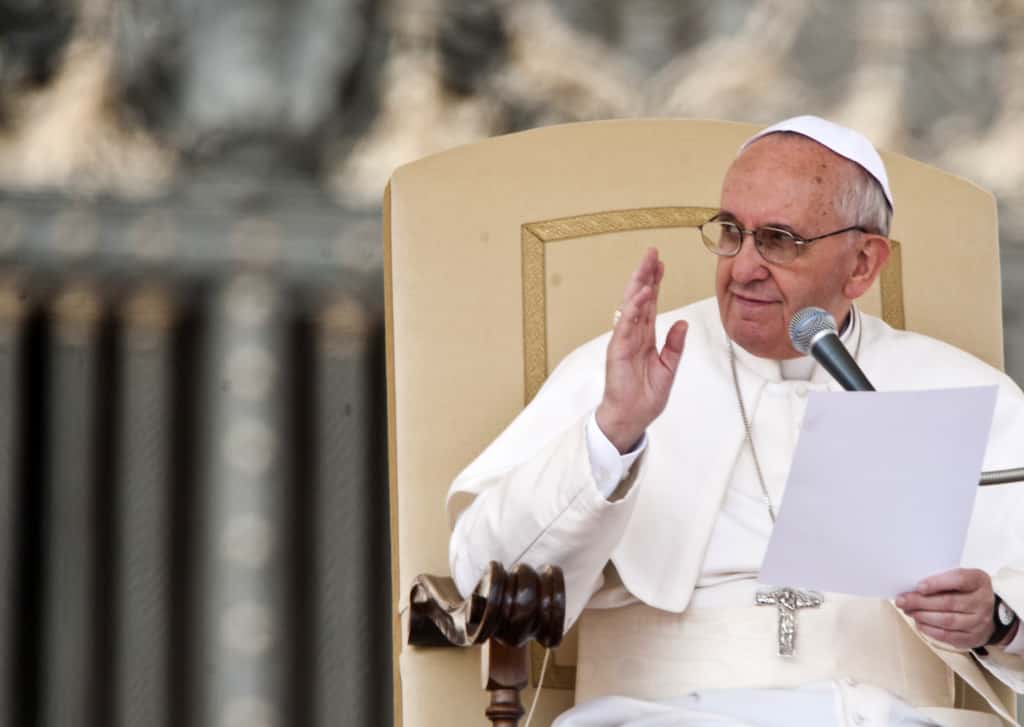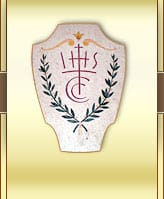I am trying to resist “Francis mania.” Really, I am. It’s like a fever that has overtaken any number my friends, not a few websites (not to mention, ahem, this one), and not a small part of myself already, but I’m fighting it. Really.
The reason for my resistance? I want to focus on Francis’ message and challenge, not only on his style or even what I like about him. I need to stay focused on matter over form, and substance over style, and, man, I am trying. It’s just that I’m doing a terrible job of it.
But what am I supposed to do?! I mean, love Peter Faber and hope he’ll get canonized? Bam – he’s a saint. Love a Church that cares for the people and walks in their midst? Bam – here’s the Pope telling priests to be shepherds who smell like the sheep. Love leadership by proximity and example? Bam – here’s Francis going out his way to kiss the disabled and disfigured. Plus he won the internet last year and is fast becoming the most notorious cold caller on earth.
Every time I think he’s done doing amazing stuff for a few minutes another thing comes along. Last week it was a short conversation Pope Francis had with the superiors of various female and male religious orders – including my own – in the Italian journal La Civilta Cattolica. The document is called “Wake Up the World!” and can be found in .pdf form here.
Now for someone like me a conversation between the leaders of religious orders and Pope Francis might be naturally inviting, but I’m sure that’s not universally true. So, why am I making a big fuss about this here at TJP instead of just gushing over beers in my community rec room? Because this document shows how Pope Francis is actually practicing one of the most challenging and important things he calls for: transparency. Throughout this conversation he discusses, dialogues, and, rather than allowing his answers to be hidden behind bureaucratic procedures or dodging the difficult questions, Francis responds honestly. It’s great to see.
And this is most evident in small moments of the conversation, for example, when he is asked a set of questions about the relationship between religious communities and local bishops, Pope Francis doesn’t dismiss the question or defend the current procedures. Instead:
Pope Francis answers that the request to review [a 1978 document] concerning relations between bishops and religious has been pending for a few years now. The Pope is of the opinion that the time is ripe now because “that document was useful but is now outdated… I know by experience the problems.”… For this reason the Pope confided to the Congregation for Religious the task of resuming reflection on the [1978] document… and to work on a revision.
It’s possible to read a section like this and see very little, but for those of us wondering where the papacy stands on the scale between absolute monarchy and parliamentary democracy this is an answer; in this seemingly banal discussion of delays and opportune times, we get a “behind the scenes” clear look at how the Vatican curia operates.
And I think that’s one more serious point to take in about Francis: he offers transparency as a modus operandi. He’s not the first Pope to consult and advise rather than order, but by having conversations like this – by releasing this document to the public – he’s just showing us how it is that he wants the big Vatican machine to work.
“Wake Up the World” shows Francis in action, advising how others can also create the transparent Church he so charismatically depicts. Are we ready to translate this transparency into our lives? I dare say, it’ll be my New Years resolution.
***
The cover image is by Flickr user Catholic Church (England and Wales) and can be found here.



